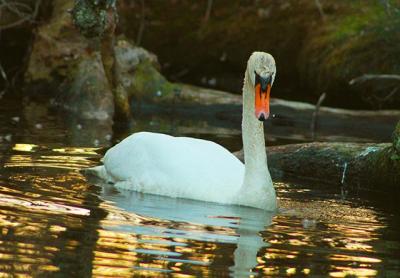Mute Swan Elimination Rethought

A proposal to eradicate the mute swan population in New York State has been dropped by the State Department of Environmental Conservation, which is taking comments through Dec. 13 on a revised mute swan management plan. The new plan would allow the swans to continue living in the wild, unhindered, on Long Island, in New York City, and the lower Hudson Valley, though nonlethal means of controlling their numbers and range, such as preventing eggs from hatching, would be encouraged. In upstate areas, the plan calls for decreasing the swan population over the next six years.
The previous plan, released in early 2014, called for the destruction of mute swan eggs and nests, and would have allowed the shooting, capture, and euthanization of adult swans, including, possibly, a swan-hunting season. Feeding the birds would have become illegal.
The revised plan is a third draft based on “extensive public input over the past three years,” according to the D.E.C. On its website the department acknowledges that “mute swans are a non-native species that many people enjoying seeing despite adverse impacts the birds can cause.”
Brought to North America from Eurasia in the late 1800s for ornamental purposes to grace lawns, bays, and ponds, mute swans escaped or were released from captivity in the early 1900s, and expanded their territory throughout the state, with their estimated population growing to more than 2,000 birds.
They can be found in coastal bays, marshes, and wetlands, and on inland lakes, rivers, and ponds, and are largely nonmigratory, though some do move south during severe winter weather.
They can have negative ecological impacts, according to the D.E.C. Besides a propensity to be territorial and aggressive while nesting or raising young, potentially deterring humans from recreation in natural areas, the swans impair fish and plant habitats and damage wetland areas by destroying plants and adding large amounts of fecal coliform. In proximity to airports, they can also pose hazards to aviation.
The new plan, according to the website strives to balance competing viewpoints “by accepting the continued existence of some feral mute swans in the wild, while preventing any further population growth or range expansion.”
In the downstate area, the D.E.C. says it will conduct “nonlethal mute swan control activities to minimize population growth . . . primarily through egg-addling.” Eggs are removed from nests and shaken, destroying the growing embryos.
Upstate, the agency says it will be proactive in preventing range expansion by the swans and “reducing or stabilizing the overall population over the next six years,” primarly through nonlethal removal and nest treatments. However, the D.E.C. says in its draft plan, “where necessary, mute swans will be lethally removed.”
The full draft mute swan management plan can be found on the D.E.C. website. Written comments from the public on the revised plan will be accepted by the D.E.C. until Dec. 13 at Bureau of Wildlife — Mute Swan Plan, 625 Broadway, Albany, N.Y. 12233, or by email to [email protected], with “Mute Swan Plan” in the subject line.
Several hearings are planned across the state. On Long Island, a hearing will be held on Oct. 26 at 6 p.m. at the Suffolk County Water Authority Education Center in Hauppauge.
